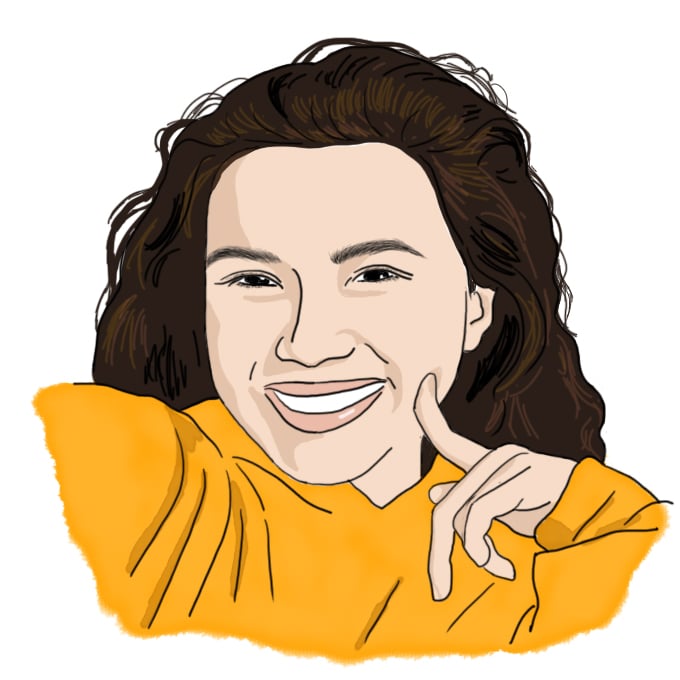
How I Write Academic Papers by Cami M. '23
a look into how i wrote my final paper
Over the past couple years at MIT, I’ve had to write a lot of papers, and while I’m not the best writer, I’ve found that this formula works really well for me.
Evaluating the Prompt
Perhaps the obvious place to start is reading the given prompt. This was my prompt for my CMS.616 Games and Culture class:
Each paper must be an original written piece of work that takes up a topic covered under the thematic of games & culture with an emphasis on social scientific approaches. This is your opportunity to really dig in and research a topic of your choosing related to the course. I’d encourage you to pick something you are excited and curious about, maybe even something you have some experience with. You will either be leaning on data from prior scholarship or, alternatively, some original research (for example, using a case study approach where you focus on a game and analyze it akin to what one of our author’s does). If you want to do any research that involves interviewing people or observation you must speak with me for approval first. Please note that given the tight timeframe doing this kind of work is probably not viable unless you have a significant amount of time to dedicate to it.
A key factor in these papers is that you demonstrate a rigorous, scholarly analysis of the subject of your essay. You cannot just be “in your own head” or making broad claims but must evidence your arguments and engage with published peer–reviewed research. The key is that you find support for your argument in scenarios, research, and cases beyond your own personal experience. This will involve consulting academic journals and books on the subject, as well as leveraging good examples to build and anchor your argument.Specs:
Your paper should be 12–15 pages long (double–spaced, 12pt Times/New Roman, 1” margins).
Make sure you have a thesis that you provide evidence for.
Make sure what is at stake/why it matters is clear in the argument you are making.
You should meaningfully engage with a minimum of 5 peer–reviewed scholarly books or articles related to your topic. This means more than simply dropping in a single “one off” quote but actually discussing/working with the argument an author is making. Meaningful engagement can be about both building on and/or challenging work. Think of meaningful engagement in a paper as a form of intellectual conversation. “Drive by” citing is not sufficient.
Your baseline 5 references must either be scholarly articles from journals listed at my resource page at http://tltaylor.com/teaching/research–resources–for–students/ or from an academic press if a book. References beyond these five can come from other sources. I also encourage you to make use of the great reference librarians we have here at MIT if you are unsure how to go about a rigorous lit review.
You should use the Chicago Manual of Style or APA conventions for quoting and citing work (see http://cmsw.mit.edu/writing–and–communication–center/citation–formats/ for guidance) and include a complete bibliography at the end of the paper.
You must pay attention to proofreading and attend to the technical elements of writing a paper (citations, page #s when quoting, etc.).
I made careful decision to pay attention to the specifications, such as noting the baseline of five references that have to come from resources on that specific website, as well as the 12-15 page requirement and spacing details.
Brainstorming
Then, I move onto brainstorming!

I had an initial idea for the paper already, so I didn’t have to brainstorm too intensely. I have always been intrigued by Twitch as a platform and medium so I thought it would be really interesting to do my paper on spectatorship and Twitch and look at how spectatorship has evolved over itme.
Idea Approval / Sanity Check
After brainstorming, I usually settle on a main idea and come in with some back-ups, before setting up a meeting with my professor to make sure my idea makes sense and I’m headed on the right track.
I met up with my professor, T.L. Taylor, after class a couple weeks before the paper was due to get some feedback on my idea. She helped me clean it up and cinch the idea, making it focus more on platform and spectatorship. The idea then evolved into looking at the elements that Twitch utilizes and maintains to cater toward viewership. I also talked about pushing it in the direction of ethics (our role as a viewer, our responsibility) or maybe focusing on how Twitch perpetuates parasocial relationships, but my professor suggested I stay away from super subjective topics like these.
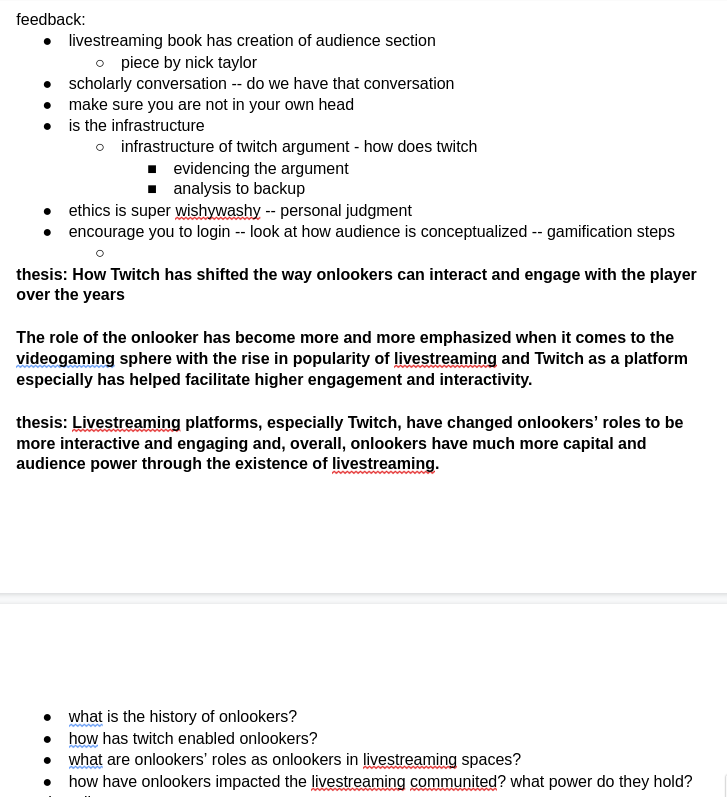
Through the feedback, I was able to narrow down a lot more on my topic and come up with some key questions to focus in on before I do research, specifically honing in on the history of spectatorship, Twitch’s elements to enable spectatorship, and the role of spectatorship. I then also create a rough outline that maybe gives an idea of what the paper could look like, and this also helps guide my research!
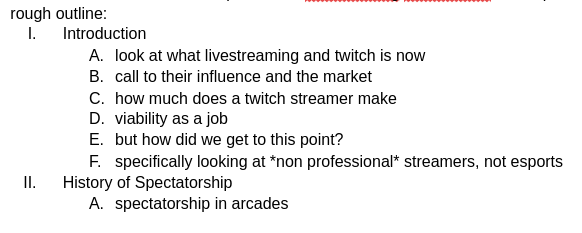
Resource Gathering
I then move onto resource gathering, where I find resources that try and answer the questions I posed earlier.
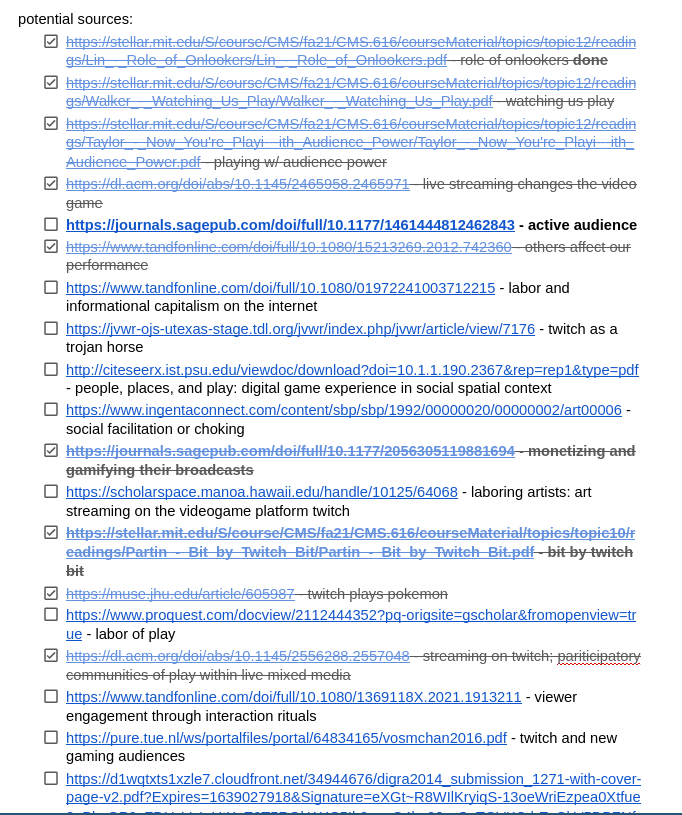
I do a lot of my resource hunting through articles we read in class, my professor’s list of resources, as well as some keyword searches on Google Scholar. I decided to look back in my Google search history to see what phrases I looked up to find some of these articles. These included:
- video games role of spectator
- twitch and spectatorship
- evolution of spectatorship
- capital labor of twitch
- twitch and role of viewer
- twitch and engagement
- history of livestreaming
- history of onlookers play
- history of spectatorship games
I would also go through academic journals and look up keywords like “Twitch” and “spectatorship.” Other times I’d find a really good article and then look through the references of that article.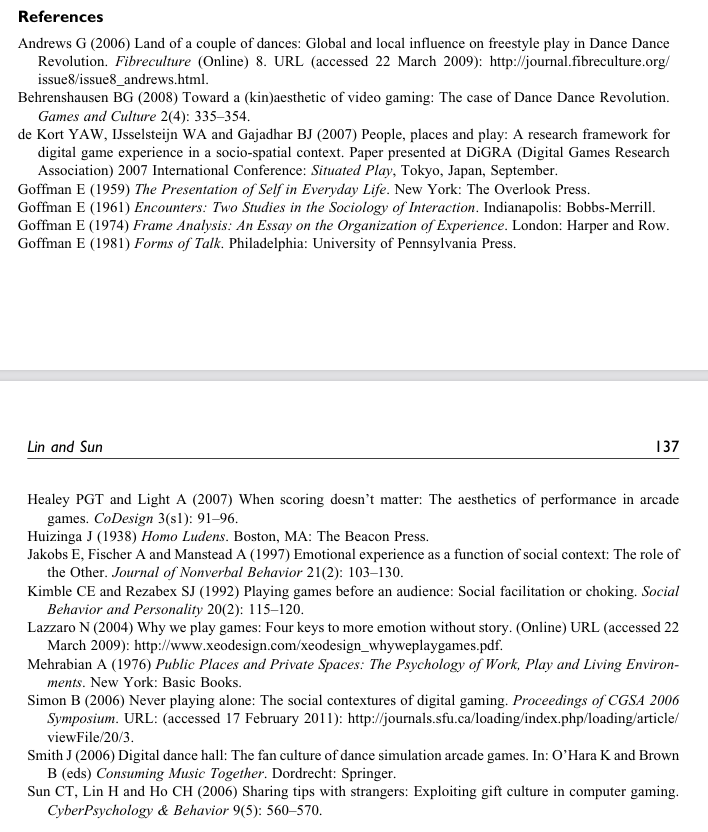 This paper ended up being particularly useful since I used Goffman’s interactional frames theory as a central piece in my paper.
This paper ended up being particularly useful since I used Goffman’s interactional frames theory as a central piece in my paper.
Resource Evaluating
After gathering resources, I then go down my resources one by one and begin to take notes on them.
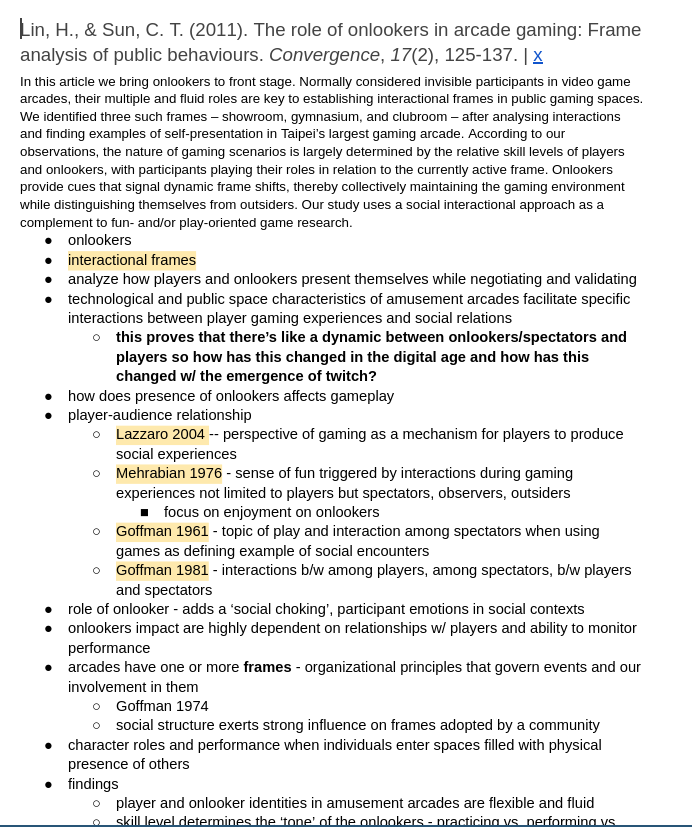
For research, I make the APA citation of the paper a header and add a direct link to the paper. Then, I add the abstract of the paper below it so I have a brief idea of what the article is about. After, I take bulleted notes of the paper. I’ll bold any important information from the paper, as well as bold my own thoughts on the paper, especially if I have ideas to how it ties to my thesis. This really helps me better analyze the papers and remember I’m not supposed to simply be reading these papers, but meaningfully engaging with them and inserting my own ideas and understanding of the paper.
This process is not at all step by step and I often go back between resource gathering and resource evaluating, especially if the paper is useful and has a lot of relevant information and references.
Outlining
After resource gathering, I’ll typically be left with about 16-20 pages of research, which should be good to start writing. As I’m researching, I’m constantly thinking about how these sources relate to my thesis and what order I can possibly put them in.
When I finish researching, I start organizing my ideas into an outline.
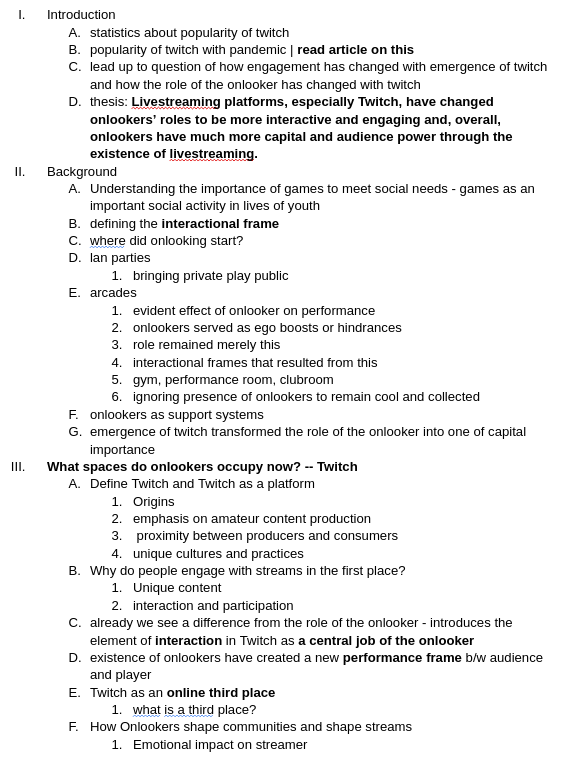
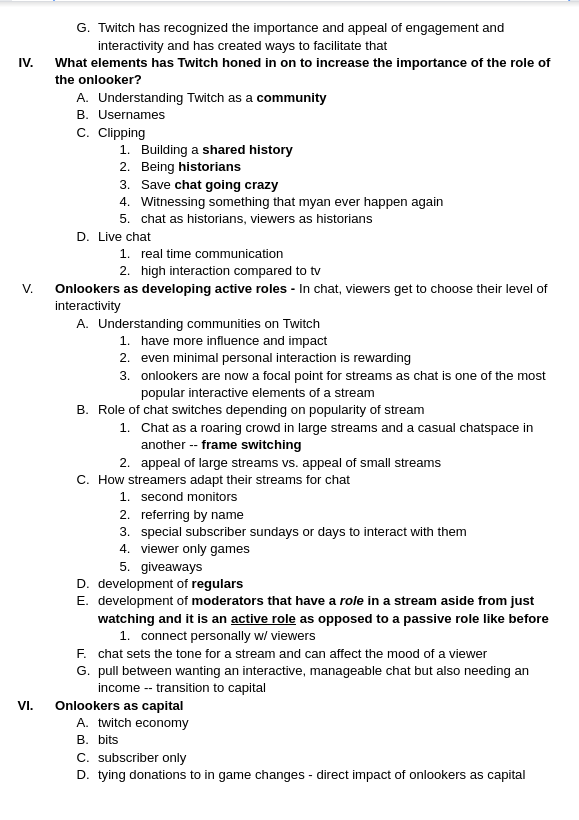
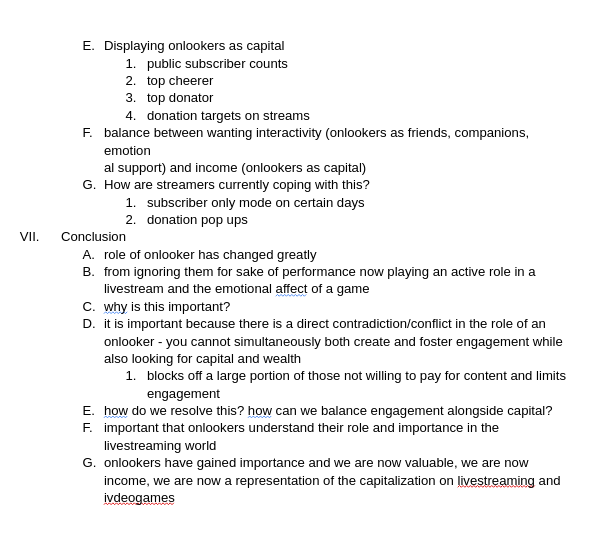
I usually try and figure out the best order in which to display information. Since my paper is talking about the evolution of spectatorship, it makes sense to give information chronologically. Then, once I’ve given all the information needed, it’s important to interact with the ideas critically, asking questions like what are the implications of spectators now being treated as capital? or why does this matter in the first place?
I always try and remind myself that a conclusion should not be a reiteration of the ideas we’ve covered, but a call to action of some sort and a better picture of the greater impact of all of this.
Drafting
Once I have the outline, it’s usually really easy to get started on writing since the writing is basically all done for me through the outline. It’s as easy as just sitting down in a pretty library with some snacks and good music.
Editing
After I have a draft, I usually do a couple rounds of editing depending on how much time I have left. The first round is me doing a read over through my paper and making sure it makes sense, as well as is free of any blatant grammar errors. After I read through it, I’ll usually send it to 2-3 friends to read over and give feedback.
Submitting
Then voila! I submit the paper and I am done! You can read the final version of my paper in the previous blogpost.